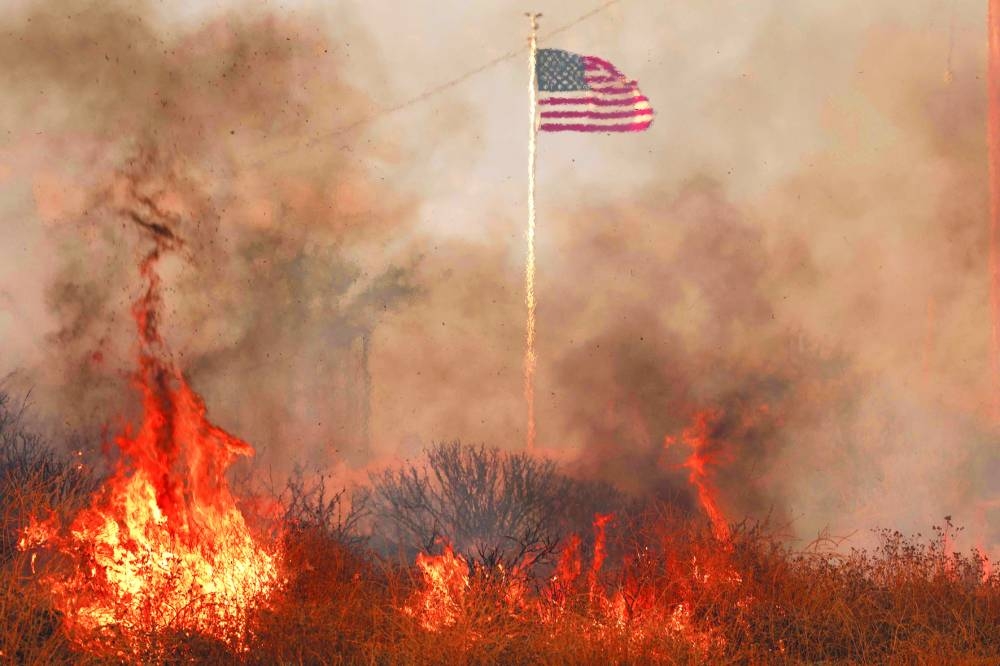Brutally high temperatures threatened tens of millions of Americans yesterday as numerous cities braced to break records under a relentless heat dome that has baked parts of the country all week.
The National Weather Service (NWS) warned of an “extremely hot and dangerous weekend” with daytime highs routinely ranging between 10° and 20° Fahrenheit above normal in the US West.
Residents of central and southern California, for example, could expect to see thermometers peaking at 100-110F (38-43° Celsius), it said.
The heat is forecast to remain anchored over the West for the weekend, “growing hotter in the South by early next week”.
Authorities have been sounding the alarm for days, advising people to avoid outdoor activities in the daytime and to be on the watch for signs of dehydration, which can quickly become fatal in such temperatures.
In the hardest-hit areas, residents face a daily endurance marathon against the sun.
The Arizona state capital of Phoenix has recorded 15 straight days above 109F (43C).
At a construction site outside Houston, Juan, a 28-year-old worker who declined to give his last name, helped complete a wall in the blazing heat.
“Just when I take a drink of water, I get dizzy, I want to vomit because of the heat,” he told AFP. “I need something else, a Coca-Cola, a Gatorade – and cold – just to be able to walk.”
Residents of the Texas metropolis have been asked to conserve energy from 2pm-10pm this weekend by provider Reliant Energy, in an attempt to mitigate high demand.
One local news station in the city, KPRC, heralded the prospect of “finally seeing an end to this heatwave” – but only by “Sunday of next week”.
Heatwaves are occurring more often and more intensely in major cities across the United States, according to the federal Environmental Protection Agency (EPA), with a frequency of six per year during the 2010s and 2020s compared to two per year during the 1960s.
“This heatwave is NOT typical desert heat,” the NWS’s Las Vegas branch tweeted, specifying that “its long duration, extreme daytime temperatures, & warm nights” were unusual.
A bit further west, California’s famous Death Valley, one of the hottest places on Earth, is likely to reach new peaks today, with the mercury possibly rising to 130F (54C).
In Canada, which is suffering from warm temperatures combined with months of below-average rainfall, the amount of land burned by devastating wildfires climbed to 24.7mn acres (10mn hectares) so far this year on Saturday.
The prior all-time high occurred in 1989, when 18mn acres were burned over the course of an entire year, according to national figures.
“We find ourselves this year with figures that are worse than our most pessimistic scenarios,” Yan Boulanger, a researcher at Canada’s natural resources ministry, told AFP.
Smoke from the wildfires were meanwhile creating unhealthy air quality conditions in parts of the upper-central United States – similar to episodes in June when blazes in the Canadian province of Quebec cloaked the US East Coast in a noxious haze.
While it can be hard to attribute a particular weather event to climate change, scientists insist that global warming – linked to humanity’s dependence on fossil fuels – is responsible for the multiplication and intensification of heatwaves in the world.
The US heatwave comes after the EU’s climate-monitoring service said the world saw its hottest June on record last month.

The United States national flag is seen surrounded by flames during the Rabbit fire in Moreno Valley in Riverside County, California.
